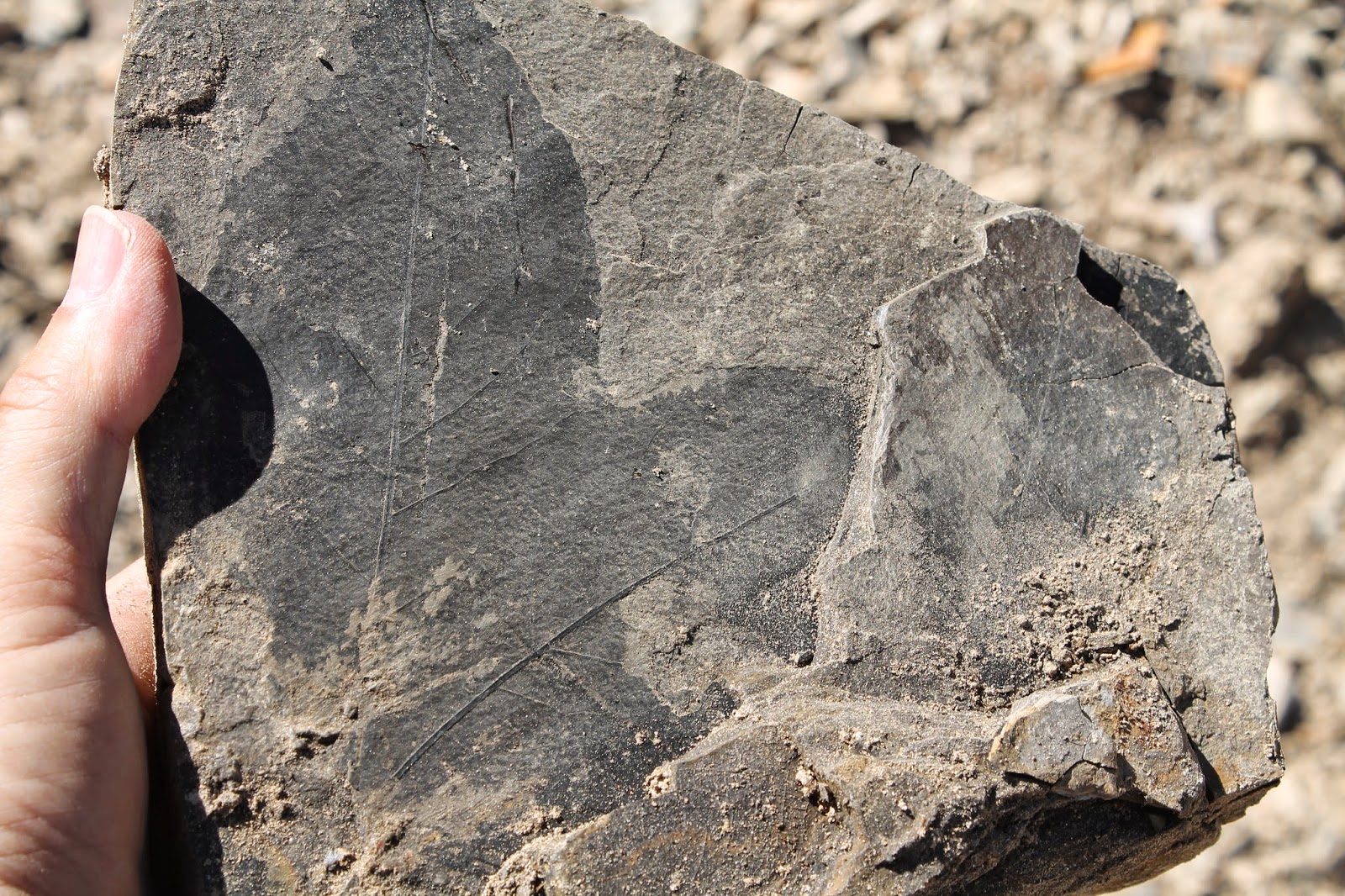The
leaf fossils that I saw at Fossil Bowl (see previous essay) came from a
15-year-old Miocene forest that dominated what is now northern Idaho. These
forests closely resembled the rich forests of deciduous and evergreen trees
that now characterize parts of China and, to a lesser extent, the eastern US.
They were almost totally unlike the modern forests of northern Idaho, which are
dominated by conifers such as Douglas fir.
Here
are just a few of the fossil leaves that I found. I have used William Rember’s
online gallery for identification.
My identifications are tentative for several reasons. One is that I might have
found some leaves previously undiscovered in this location. Another is that
some crucial diagnostic features, such as leaf bases and margins and overall
shapes, might be missing. I offer these images for others to help identify.
Bald
cypress: Today, Taxodium is found
only in swampy areas of North America and Mexico.
Greenbriar:
today Smilax is common in much of
eastern North America and in Asia.
Beech:
This leaf appears to be a false beech Pseudofagus
idahoensis; a small poplar leaf (Populus)
is in the upper left.
Sycamore:
This fossil appears to be Platanus dissecta.
This
specimen looks like a red oak (Quercus),
perhaps Q. payettensis.
In
this image, I believe I recognize a birch (Betula
vera) in the lower right, though birch leaves have smaller teeth.
This
image reminds me of a mulberry (Morus),
which has not been reported from these deposits. Its lobes but not its margins
resemble sycamore. The closest match I can find in reported records is a
sweetgum, Liquidambar pachyphyllum.
In the layer immediately underneath it is a Pseudofagus
leaf.
Anyone
have a guess about these?
These
fossils also tell us an ecological story. First, this was a very diverse
forest, with many tree species, resembling forests found today in China and in
the southeastern United States. Second, we can say it was predominantly a beech
forest, because Pseudofagus was the
most common leaf fossil.
And
there are some evolutionary themes we can learn from these fossils. First,
these leaves fell (over the course of many years, producing many layers) in a
forest very different from anything known in the Pacific Northwest today. The
climate 15 million years ago was warmer and wetter, which allowed trees to grow
that today survive only much further south in Asia and North America where
there is more rainfall. The principal reason for this is that, 15 million years
ago, the Cascades had not yet formed a rain shadow. The “temperate rainforests”
of the Pacific slope more closely resemble the Miocene forests than do the
forests of Idaho today. However, even the rich, moist Pacific slope forests of today
there are few broadleaf trees, mostly bigleaf maple and tanbark oak. Fossil
Bowl preserves a lost forest.
Creationists
have an impossible time explaining how a Flood could have collected just these
kinds of leaves—bald cypress, sycamore, alder, avocado, elm, etc.—and no
others. But some creationists doubtless claim that this is a post-Flood deposit
which formed just in the last 4000 years since Noah stepped out of the Ark. But
this explanation is no better. Somehow floating rafts of vegetation had to
bring just these kinds of plants to what is now Idaho, where they grew into a
forest, and then—after the Flood—volcanoes arose and created the rain shadow
that now exists. All this in 4000 years. The volcanoes would have to rise
pretty fast, faster than they are now. Maybe God speeded things like this up
after the Flood. But the Bible does not say this; creationists would have to
just make it up.
The
thing that is perhaps most interesting to us, and difficult for creationists to
explain, is how such a forest is just a
little different from those found in southeastern North America and in Asia
today. The modern forests have the same
genera but not the same species. Even the studies of DNA from chloroplasts
of the preserved leaves show that
there has been just a little bit of genetic change over the last 15 million
years. Modern species of sycamores, for example, do not have leaves like the
one in the photo above; modern sycamore species would have evolved just in the
last 4000 years at a pace far more rapid than any evolutionary scientist would
accept.










No comments:
Post a Comment